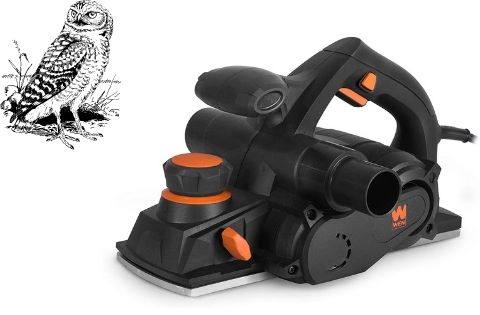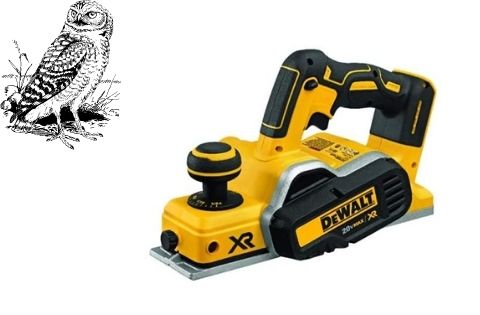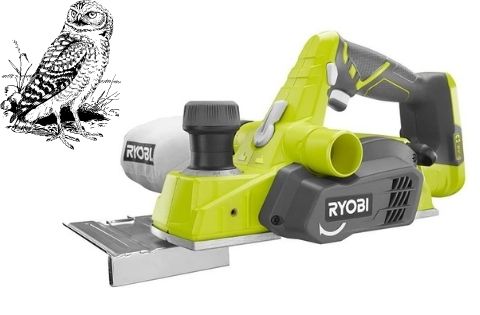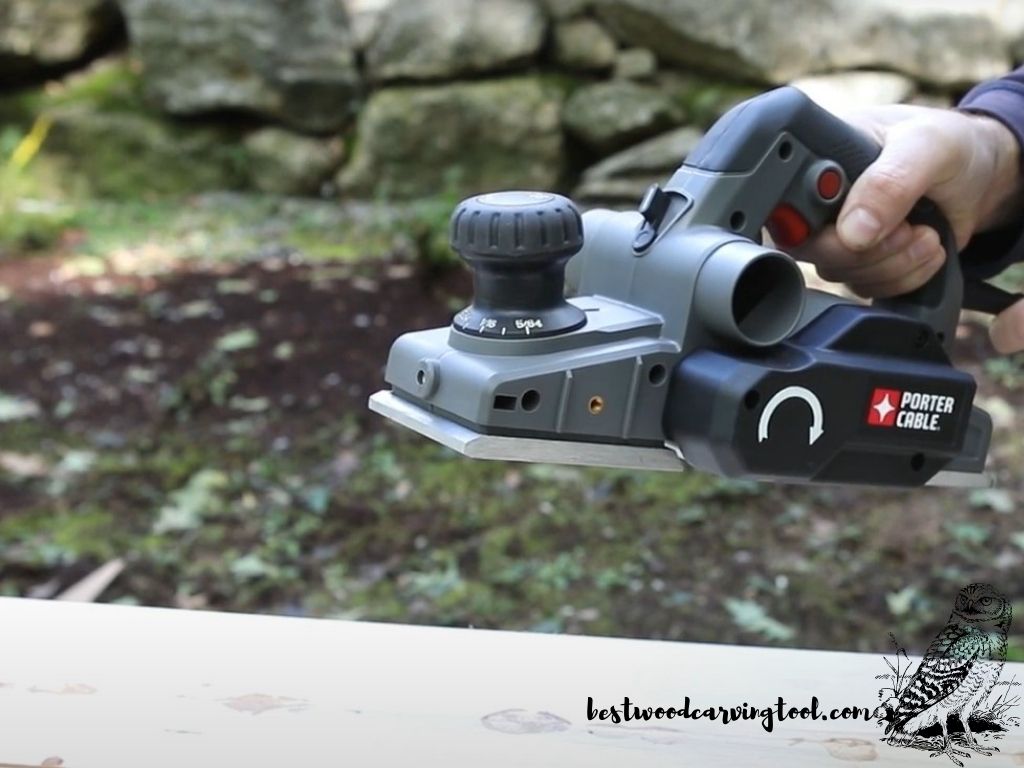![Best Electrical and Mechanical Hand Planers [Buying Guide 2023]](https://bestwoodcarvingtool.com/wp-content/uploads/2021/10/bosch-pr-hand-planer-970x350.jpg)
![Best Electrical and Mechanical Hand Planers [Buying Guide 2023]](https://bestwoodcarvingtool.com/wp-content/uploads/2021/10/bosch-pr-hand-planer-750x350.jpg)
Best Electrical and Mechanical Hand Planers [Buying Guide 2023]
Wood Working Tools reviews 01.10.2021 Jeff Richardson 0
![Best Electrical and Mechanical Hand Planers [Buying Guide 2023]](https://bestwoodcarvingtool.com/wp-content/uploads/2021/10/bosch-pr-hand-planer-1024x500.jpg)
Hello there woodcarvers! I expect you are all well and working hard on finishing some great wood designs. And as always, I’m here to help you out with that. Today specifically, we are going to talk about the best hand planers.
When working with wood, we need lots of different tools. Sometimes I envy whittlers – all they need are a couple of knives. But as soon as you become more demanding about your design, you have to deal with lots of other tools – gauges, chisels, hammers, axes, sandpapers, etc. And when we add electrical devices on top of everything, we get a merry assembly that inhabits every wood carving workshop.
So if you are in search of the best electric hand planer, let’s get started with my brand new hand planer review.
If you are in need of a new hand planer, I have everything for you. In the first section of this article, I will cover any beginners reading this, and write about planers in general, their components and types. In the second section, I made a list of products that I think are a good option at the moment. For every product, I noted their main characteristics, and my personal opinion on what makes them a great choice, and which are their flaws compared to other planers.
For those of you who are in a hurry, I prepared a shortcut to the conclusions of this article. In the following table, you will find the products I reviewed and my essential findings regarding their possible contribution to your carving tools set.

- WEN 6530 6-Amp Electric Hand Planer
- Best budget electric hand planer. This is a powerful, well-made, well-equipped, and durable machine.
- $42.36

- PORTER-CABLE Hand Planer
- Best as an addition to your workshop if you already have a planer that only needs a backup.
- $69.94

- WEN 6534 8-Amp Electric Hand Planer
- Best price-quality ratio.
- $60.96

- DEWALT DCP580B 20V MAX Brushless Planer (Tool Only) with DEWALT DW6655 High Speed Steel Blades
- Best for those who wish to have greater control over the blades.
- $190.62

- Makita XPK01Z 18-Volt LXT Lithium-Ion Cordless 3-1/4 in. Planer with BL1850B
- Best for both professional and DIY workshops.
- Price not available

- BOSCH Bare-Tool PLH181B 18-Volt Lithium-Ion Cordless Planer
- Best portable planer for experienced craftsmen. Beginners should opt for better equipped and cheaper devices.
- $149.00

- Ryobi 18-Volt ONE+ Cordless 3-1/4 in. Planer P611
- Best for anyone in search of strong and durable device. A great price-quality ratio.
- $71.00

- Stanley Hand Tools 12-101
- Best price, great for smaller projects and fixes.
- $12.69

- STANLEY Hand Planer 12-220
- Best suited for light-duty projects. Although small, it’s intended for cross-grain work.
- $32.99

- KAKURI Japanese Block Plane 42mm for Woodworking
- Best for explorers! This planer has a Japanese design logic that’s completely different from what we know in the West. It is simple but requires a special setup before use.
- $21.80
What Are Planers?
As you can guess from the very name, hand planers are tools for leveling the wooden surface. We use them when we have a larger piece of wood with some redundant layers we wish to remove- Or, we have a plank whose surface we want nicely smooth and even.
The basic structure of all planers is the same. Regardless of size and type, manual or electrical, you can expect a blade, a handle, and the “shoes”. The blade cuts the wood, the front and back shoes lead the blade along the surface, while the carver holds the tool by the handle.
Planers do a great job but let me tell you, you will need to develop some muscle strength to make them work. They can be pretty hard on the back too, as you need to push them away from you, along the plank, to make a pass.
Every planer allows you to change the position of the blade, in order to customize the depth of the cut. The deeper you go, the harder you will need to push in order to make a pass.
Pushing and shaving away the wood will of course be easier with the electrical planers. They are powerful tools, but therefore need special safety precautions, which we will discuss a bit later.
Before I move on to describing basic types of hand planers, just a little reminder that in case you are in search of some more power tools, you can check out my article about best wood lathes and the best scroll saws review. You might find something useful there. Also, if you wish to bring some diversity to your design, I wrote about the best dremel bits for wood carving, so check out the latest news from the market in that domain.
Types of Wood Planers
When we think about hand planers, we usually classify them into two basic categories:
- manual
- electrical
Keep in mind that in a woodcarver’s dictionary, planers in both of these categories are referred to as “hand planers”. This can be confusing, but it is actually logical – we do hold both types with our hands! The only difference is in that the manual ones use only our muscle power to operate, while electrical ones have an engine run by electromotive force.
Manual Planers
There are many sub-types of manual planers, and I’m about to briefly describe each of those.
Bench planer is the most common type of manual planer you will see around workshops. You need both hands to work with them, one holding it by the handle in the back and the other hand holding it by the knob in the front. This is necessary because unless you firmly press the front knob, the tool will have a tendency to move up when the blade first hits the wood, and that would make undesired cuts in your design.
Joinery planers will help you make joints. Their cutting edge is not necessarily straight and enables you to make various types of joint grooves, such as rabbets, dovetails, etc. In order to do that, joinery planers need a special accessory named shoulders, which guides the blade to make consistent cuts that will later allow the perfect fit between the joints.
Molding (or moulding) planers do the most complex job in carving and carpentry. While joinery planers mostly make squared cuts that are mostly practical, molding planers make curved grooves usually for the purpose of esthetics. If you visit European cathedrals and castles, you will see these beautiful wavey designs in the old furniture or picture frames. Molding planers are therefore very complex, some need two people to manage them, they sometimes have ropes attached for working on bigger projects, and so on. Seeing these in a workshop means we are dealing with a real professional.
Electric Hand Planers
Electric (or power) hand planers are much more powerful, and therefore efficient tools compared to manual ones. They will help you do much more in less than no time, however, they are usually more expensive and less precise compared to hand planers.
They are built in a similar manner as the manual planers, but the main difference is in the blade. In electric hand planers, the blade rotates, powered by the engine, and that’s how it actually cuts the wood. Electric planers are much more loud and messy than hand planers.
Again, there are lots of models you will see in the market, but let’s say we can group them into four general categories: hand power planers, benchtop planers, cordless hand planers, and stationary electric planers.
Hand electrical planers are best for removing small amounts of wood by pealing off the wood from the surface, very similar to manual ones. The knob is usually also a switch, which you use to set the depth of the cut. Although electrical, it’s the carver who holds and directs the tool with his hands.
Benchtop electrical planers are fixated and don’t require your hands to do work. Instead, you will usually hold the plank while the benchtop electrical planer does the job. And its job is to cut large pieces of wood, with high precision.
Cordless hand planers have a battery that runs the engine. The purpose of these devices is to make up for one of the flaws of electrical planers, that is, power supply dependency. For example, cordless planers are very useful if there’s a place with a piece of furniture that can’t be moved or doesn’t fit the workshop space, but also doesn’t provide electrical power source.
Stationary planers are a serious investment, usually meant for industrial production or for those who have a heavy workload.
Bear in mind that this list is only provisional, and there are many other types and sub-types of electric planers you will discover while working with wood. If you go deeper into the topic, you will see that we can also categorize the planers based on the material they are made of, so we have metal, wooden and hybrid ones.
Criteria
As you will see, although in this article I reviewed some manual planers as well, I predominately focused on electric hand planers. Therefore, I will now explain based on which criteria I evaluated the electric hand planers. As for the manual ones, they are more simple and will be evaluated only based on their price and overall quality of the offer.
Price
As we are speaking about quite expensive devices, I think the price is an important parameter. A bigger price usually indicates a good manufacturer and overall good quality, however, not automatically. What we actually want is a good price-quality ratio, meaning that we want the highest possible quality at the lowest possible price. If a machine satisfied this criterion, I put price in the “pros” section.
Power
The power will determine the functionality and durability of the planer. There are two parameters that will tell you how powerful electric planer is:
- amperage/voltage (Amp/V)
- Rotations Per Minute (RPMs)
Now, we measure power differently for the corded and cordless machines. In the case of corded planers, which have undisturbed electrical power supply, we will measure their potency in amps. The value of at least 5 amps is required to consider a machine acceptably strong.
On the other hand, in the case of cordless planers, their power is measured in either Ah (amps per hour) or volts (V), which basically indicates the power of their batteries. Usually, good batteries have a voltage ranging between 18V and 20V.
As for the RPMs, a good range is considered to be between 15000 and 20000 RPMs.
Blades
Next are the cutting edges. What we look for here is the material, which will determine their endurance. One of the best materials we can get is carbide, but steel and carbide-tungsten combinations are also good options, just less durable.
Warranty
I think warranty is a great indicator of a good product. If a manufacturer promises that the device will work properly for at least a couple of years, then it really relieves the risk that you might be wasting your money.
Accessories
There are some things that go with the planers and can be very useful and handy. Therefore, I took into consideration if the device comes with a dust chute, kickstand or similar.
WEN 6530 6-Amp Electric Hand Planer

Wen is a well-known brand to all woodcarvers and anyone working with wood. This corded device comes with a powerful motor (6 amps) and two HSS (high-speed steel) blades, already making this device stand out. The machine has a v-shaped groove, which is very important for craftsmen as it makes flattening very easy. It also enables quite a deep cut, up to ⅛ of an inch, which is a rarity.
Apart from that, there are several accessories coming along (a dust bag, shoulders, kickstand, rabetting guide), as well as a 2-year warranty.
- Price
- Quality
- Power
- No breaks on the knob
To Sum Up
This is a powerful, well-made, well-equipped, and durable machine. What can be pointed out as a weakness is that the knob doesn’t have a break, so it might accidentally change while you are putting pressure on it. Despite some customer reviews complaining about occasionally poor quality control, this is definitely worth the price.
PORTER-CABLE Hand Planer

Another corded and powerful machine (6-amp), although the RPMs being only 16500 speaks that it would be better to use it in softer woods. On the other hand, if you are in need of some edge chamfering, this model has three grooves enabling this. Again a double carbide blade is a great deal.
The price is not so attractive, and considering the low RPM rate, it’s even less so. But still, this is a nice machine for DIY workshops and hobbyists.
- Edge chamfering grooves
- Carbide blades
- Price
To Sum Up
This machine is a great addition to your workshop, that is if you already have a planer that only needs a backup. It has fair power, an edge chamfering option, and a long warranty period, so it can be quite helpful. Not the best choice for professionals.
WEN 6534 8-Amp Electric Hand Planer

Having an 8-amp motor, we are speaking about a serious machine here. It has two HSS blades and two v-shaped grooves, all pointing to a planer worthy of a professional. Above all, it comes at more than an affordable price of 60 dollars.
Additionally, there are several useful accessories in the package: a kickstand, a rebetting guide, and a parallel fence bracket. A two years warranty is another checked box here.
- Price
- Blades
- Double v-shaped groove
- Blades
To Sum Up
All in all, this is a very good price-quality ratio. It would be perfect if the blades would be carbide. But like this, this is a tool for workshops that don’t do much of hardwood, but need a strong and durable device.
DEWALT DCP580B 20V MAX Brushless Planer (Tool Only) with DEWALT DW6655 High Speed Steel Blades

This is a cordless planer, which you can buy at quite a high price with two HSS blades you can sharpen. The power of the battery is 20V, which is good, but 15000 RPMs doesn’t really impress me.
It comes with a kickstand and a v-shaped groove, which is quite good. On the other hand, a great number of customers seem to be complaining about the front shoe not being coplanar with the back shoe. And as these come pre-manufactured and can’t be adjusted, this can be a real problem.
- Cordless
- Price
- Blades
To Sum Up
Except for the non-coplanar shoe issue, most of the customers seem quite satisfied with this Dewalt hand planer. I would say that it is quite an expensive machine for the quality and strength it provides, so I would recommend it to those who wish to have greater control over the blades and an option to sharpen them.
Makita XPK01Z 18-Volt LXT Lithium-Ion Cordless 3-1/4 in. Planer with BL1850B

Another cordless, battery-powered device, this time made by the famous Makita brand. A double carbide blade seems impeccable. However, strength seems to be average: 15,000 RPMs. However, at an additional price, the battery can be quite strong (5 Ah or two batteries at 3Ah each).
Like most of the planers in this list, it has a v-shaped groove. What’s especially handy about this model are the electric brake and LED indicator which helps you monitor the battery charge.
- Blades
- Strong batteries
- Price
To Sum Up
This Makita power planer is a good choice, although a few people complain about quality control issues here as well. Although a bit pricey, this is a great and durable device for both professional and DIY workshops.
BOSCH Bare-Tool PLH181B 18-Volt Lithium-Ion Cordless Planer

A famous brand from Switzerland brings another cordless model to our list today. Except for the good name, it has a regular motor power of 18V, only one blade, and a quite hefty price.
Although durability and quality are never a question with Bosch, the price seems even more problematic if we remember that there are no accessories here – no shavings bag or kickstand, and not even the battery. To be honest, regarding the battery, that might not be such a problem for those of us who have lots of Bosch equipment around, as this planer can use any other Bosch 18V lithium battery on the market.
- Reliable brand
- Lithium battery
- Price
To Sum Up
This machine is best for experienced craftsmen, who need a durable tool they can rely on, and don’t have a problem investing a larger amount in order to do that. I think beginners should opt for better equipped and cheaper devices.
Ryobi 18-Volt ONE+ Cordless 3-1/4 in. Planer P611

Ryobi is a Japanese brand, and the model we are about to learn more about is a cordless electric planer with a motor working with 18V. It has a double blade and does a great job at working even with the hardest wood.
Some people complain about the shavings bag, which doesn’t seem to be quite durable. Apart from that, this Ryobi planer is a great choice.
- Power
- Blades
- Price
- Poor quality shavings bag
To Sum Up
Ryobi is not such a famous brand, but experienced craftsmen know it very well. This company has a tradition of more than 80 years, and they know what they are doing. Although not perfect in terms of accessories (you will need to buy a battery and a charger separately), overall, this model has a great price-quality ratio.
Now, let’s quickly inspect some manual planers that got under my hand recently.
Stanley Hand Tool

This tiny manual planer comes from a US manufacturer with more than 150 years of tradition. However, looking at the other reviews, people don’t seem so delighted. It seems reasonable to expect that this planer might need some sanding and tuning up before the first use. A good deal for the price, great for smaller projects and fixes.
Stanley Hand Planer

This manual planer is a bit bigger than the previous one, however, still best suited for light-duty projects. Although small, it’s intended for cross-grain work. Very well-made, it has a lifetime warranty. However, as we live in an age of mass production, quality control can bee an issue. So, expect you might need to tidy it up before use.
KAKURI Japanese Block Plane 42mm for Woodworking

Here is something for exotic cultures enthusiasts! This planer is not only produced in Japan but has a design logic that’s completely different from what we know in the West. It has a very simple design that requires a special setup before use and has a specific way of adjusting. I personally never used any of these, but I have friends who do and are quite satisfied.
To Sum Up
I tried to make an all-encompassing hand planer review, which would have something to offer to both beginners and experienced carvers. It includes my recommendations of the best manual hand planers, as well as the best electric hand planers I could find in the market at the moment. I hope you could find some useful information here, which will help you decide on your future planer. See you in the next awesome wood carving tools review!



No comments so far.
Be first to leave comment below.